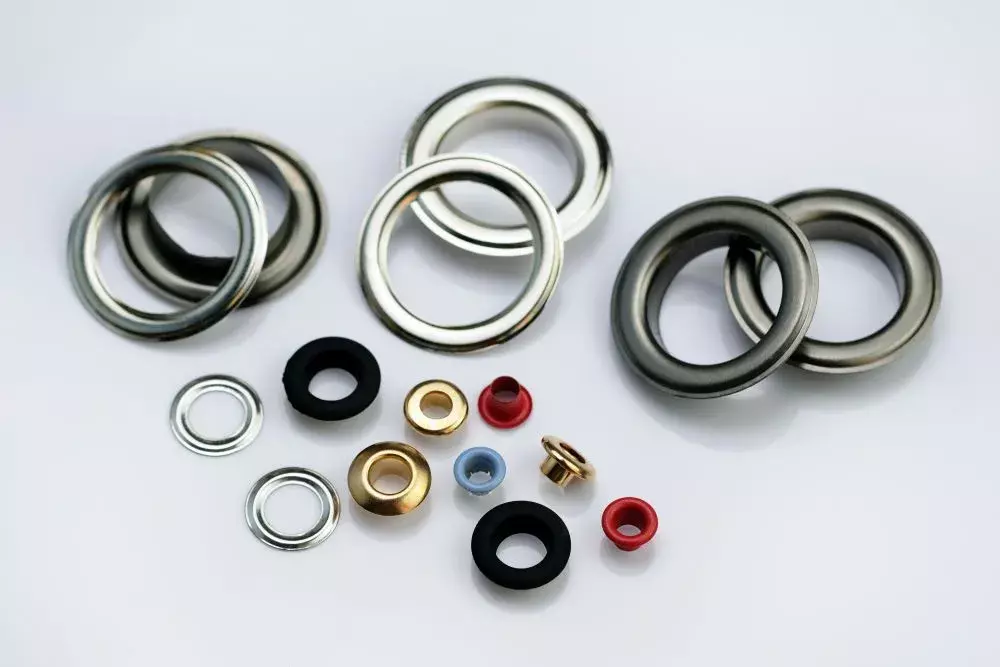The Difference Between Steel, Aluminum, Nickel, and Brass Grommets
2023-07-11
You'll take on more specialized projects as a more advanced sewing professional. One of the factors that can make a sewing project more complex is the addition of hardware, which sewing professionals apply to their projects for various reasons.
In most cases, metalware pieces are added to a garment or item to make it functional for a specific purpose. For example, zippers or fasteners can be attached to a bag or pouch so that the user can fasten it, ensuring that any items inside are safe and secure.
Another common type of metalware for sewing projects is a grommet. Grommets come in several sizes and are used as a reinforcement for a planned opening in a fabric. Grommets are essential for making numerous items fully functional and long-lasting.
What Are Grommets Used For?
Some items that sewing professionals commonly add grommets to are flags and banners. The grommets are typically applied to holes on the side of the flag or banner, which allows the fabric to be safely attached to a pole, rope, or similar item. This way, the banner or flag can be displayed neatly without bunching up or tearing from the holes.
Grommets can also be used for curtains, which are a common sewing project for intermediate to advanced home sewists. The grommets are placed at the top of the curtains, where the fabric is attached to the metal rings hanging from the curtain rod. Thanks to grommets, the curtains can be easily moved from side to side, and the holes in the curtains will be securely reinforced.
Features of Various Grommet Types
If you plan to use grommets in your next sewing machine project, you may be wondering what type of grommet you should choose. Let’s take a look at a few common grommet materials and the different features of each.
Steel
Most people know that steel is one of the strongest types of metal. As a result, choosing steel grommets for your project means you can rest assured that your grommets will stay in and withstand many years of normal wear and tear. However, steel grommets can be less malleable than brass grommets, so it may be more difficult to fasten them.
Aluminum
Aluminum grommets are both durable and resistant to rust and other types of corrosion. This makes them one of the best choices for your sewing project.
One downside of aluminum grommets is the metal’s very lightweight nature. With this in mind, aluminum grommets should only be used for projects that bear light loads. You should therefore avoid aluminum grommets for hefty projects like large tarps or upholstery pieces.
Nickel
A grommet will rarely be entirely made from nickel, but some grommets are reinforced with nickel plating. This provides a different color finish than most metal pieces and additional resistance from rust and other abrasions. If your project is designed to spend most of its lifetime outdoors, it may be worth purchasing a grommet plated with nickel.
Brass
Brass grommets tend to be the best overall option. They are very durable, malleable for easy application, and withstand all kinds of natural corrosion. If you’re unsure which type of grommet is best for your project, brass grommets are a safe choice to ensure success.
The Bottom Line
All grommets have their place, and some are better for lightweight garment uses rather than heavy-duty functionality. However, brass grommets are the most versatile for all kinds of sewing projects and levels of expertise.
If you want optimal durability, try using brass grommets with nickel plating. As long as you take good care of your item, you likely won’t have to replace your grommets anytime soon.
Shop at GoldStar Tool for Aluminum, Steel, Brass Grommets, and Others
Whether you’re shopping for one or many types of grommets for your sewing projects, GoldStar Tool has you covered. We offer brass grommets, steel and aluminum grommets, nickel-plated grommets, and more. Shop online to check out our full collection and see which type of grommet is best for your needs.





